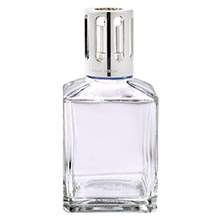Essential oil diffuser purchasing advice: how to choose the right product
- What you need to know
- Essential oil diffusers make your room smell amazing as well as making it more humid.
- Most devices diffuse a mixture of oil and water as mist.
- Some models have large water containers so you can let them run for a long time.
- Essential oils are great for both your physical and mental health.
- Some diffusers have inbuilt lights so that they work as decorative lamps too.
A world of smells
Fresh pine forests, sweet tulip fields, exotic island beaches: aroma diffusers allow you to bring a world of smells into your own home. No matter what time of year or where you are, diffusers make rooms much more comfortable and cozy. The best models will stop the air from being dry as well as making you feel relaxed.
Aroma diffusers produce delicate mist from a mixture of water and essential oils. Some diffusers use ultrasonic technology to do this, which means they don’t use any heat or fans which might otherwise alter the essential oils. Diffusers are good for both your mental and your physical health – they are both stimulating and relaxing.
What are diffusers for?
Essential oil diffusers are particularly good during winter months. Central heating tends to dry out the air inside your home, so a diffuser can help rectify low humidity issues. Diffusers distribute mist evenly around the room, whereas air fresheners just shoot out perfume in a small area. Diffusers tend to produce a less intense aroma than things like air fresheners which can sometimes be unpleasantly strong smelling. A lot of models work well as home decoration too. There are a lot of stylish designs on the market, and some diffusers have inbuilt lights so they can work as cozy lamps.
Diffusers are great for any room in your house. The only thing to watch out for is not to diffuse any oil into your kids’ rooms while they are sleeping. While it makes sense to humidify their rooms, there is a chance they could be sensitive to some essential oils. This said, if you just want to humidify your home then go for a straight humidifier – as their name suggests, essential oil diffusers are specifically designed for aromatherapy.
Advantages
- Even fragrance distribution
- Good for your health
- Very quiet
- Humidification
- Easy to use and clean
Disadvantages
- Need to be refilled regularly
- Potential for allergic reactions
Mental and physical wellbeing
Diffusers are great for your health, especially if you have a cough or a cold. The mist can help clear out your nose and soothe your throat. One thing to note is that diffusers don’t work like inhalers, so don’t breathe the mist in directly from the device.
Alongside these physical benefits, the therapeutic aromas that come from a diffuser are great for your mental health. They can help with depression, insomnia, and even concentration. Essential oils are good for people with sensitive noses as they only have natural ingredients, but make sure to check allergens beforehand in case you are allergic.
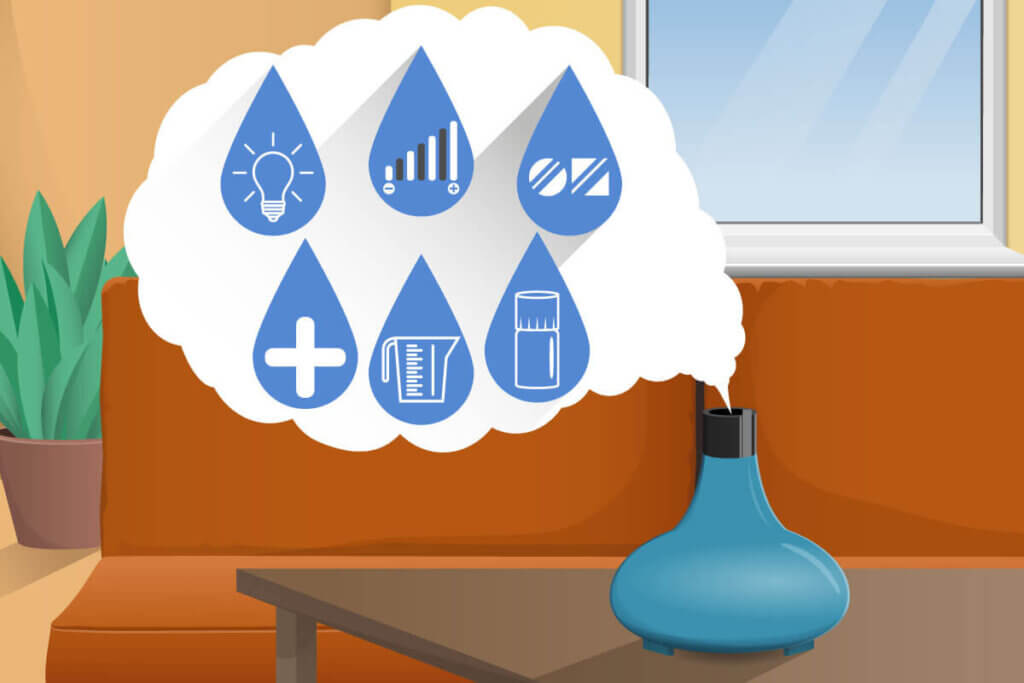
Purchasing tips
The main thing to consider when choosing a diffuser is what kind of oils you want to use with it. Some diffusers are only compatible with artificial perfumes, so make sure you get one that works with essential oils. Another important factor is how large the liquid container is, because this determines how long the diffuser can run continuously for. The other factors that might influence your decision are lighting, volume, and build material. Power consumption isn’t really a factor – almost all diffusers barely need any electricity to function.
Oils
There are a range of different oils you can use with diffusers. Essential oils are extracted from natural substances, but you can also get artificial oils that are made synthetically. From these two types there is a huge variety in aromas and scents.
Essential oils
Essential oils are widely available. They have calming and pleasant aromas. Extracted from plants, essential oils have positive health benefits. Since these oils are not water soluble, they can leave a film on the diffuser container which you will have to clean properly.
Natural extraction is more cost intensive, so essential oils tend to be more expensive than synthetic ones. Make sure to buy organic and sustainably produced oils – you won’t want oils produced and contaminated with pesticides in the diffuser.
Synthetic oils
Synthetic oils are cheap and water soluble, so you won’t need to clean your diffuser as much. They are only for used as perfume and do not have any health benefits. They can also cause allergic reactions.
Fill volume
The size of the water and oil container determines how long the diffuser can run for continuously. Most diffusers have a fill volume between 100 and 500ml (3 to 17 ounces). We can recommend going for a higher volume – you’ll need between 300 and 400ml (10 to 14 ounces) for the diffuser to run all day. Of course, if you’re only planning on using it sparingly then there are some diffusers with fill volumes under 100ml. There are also much larger diffusers that can hold a liter of water (33,8 ounces). These are designed for continuous use and are large and heavy.
In any case, refilling a diffuser is quick and easy. Most diffusers get through about 25 to 40ml of liquid per hour. Some models let you adjust how much mist they diffuse – a lower setting will be enough for light aromas, but if you want to change the humidity of a room you’ll need full power.

Lamp
Most diffusers have a dimmable light that can change colors. When choosing a model, make sure to get a diffuser that can also work without the light being on. Diffusers only really work as ambient lighting, as they aren’t particularly bright.

Volume
Ultrasonic technology doesn’t make much noise, so most diffusers are very quiet. In terms of volume, they are comparable to snow falling or leaves blowing in the wind. This said, there aren’t any electronic diffusers that are completely silent. The loudest diffusers aren’t much louder than a whisper.
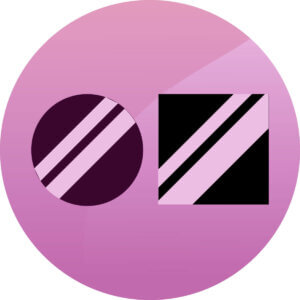
Build materials
Diffusers are usually made from a few different materials. The water containers are often made from plastics like polypropylene or polyvinylchloride. The outer housings can be made from glass, ceramic, or plastic. Plastic housings sometimes have designs on them, like wood effects. The main thing is that they are resistant to water vapor.

Extras
Auto standby is the most important extra feature to have on a diffuser. It means that once the water tank is empty, the diffuser will turn off. Some models have a timer so you can set when you want it to turn on. Another useful feature is the ability to turn off and on in intervals. Some diffusers even have an inbuilt speaker!
How do they work?
Most diffusers don’t work by heating the water and oil. Instead, they use ultrasonic technology to create vapor. In short, this technology uses ultrasonic vibrations to evaporate water and oils into tiny droplets which are then diffused around the room as mist. Ultrasonic technology is extremely quiet, and you don’t get the same kind of limescale buildups you would with a heating element.
Cleaning
Diffusers need to be cleaned at least once a month. If you are using essential oils, it is good to rinse the water container more often to prevent any oil deposits or limescale buildup. Remember: whatever is in the container will get diffused into your room, so you don’t want any dust or limescale in there. To get rid of any limescale, just add some vinegar or limescale remover and let the diffuser run for 15 minutes. If you use soap to clean the container, make sure it is odorless otherwise the next time you turn the diffuser on you will get a room smelling like washing up liquid.
Maintenance tip
Most home devices that use tap water eventually build up limescale. To prevent this from happening, either use distilled water, or filter your tap water before putting it in the diffuser.
Where should I put it?
First and foremost, make sure your diffuser is at least a foot away from any electronic devices, leather, or wooden furniture. Some of the mist coming out of the diffuser will condense on the case, so make sure it’s not placed on anything that could get damaged. The best place to put your diffuser is somewhere with a bit of air circulation so the mist gets distributed well around the room. Putting the diffuser high up or between two windows is a good idea, but don’t put it right next to a window because all the mist will just condense on it. Diffusers need to be upright to work properly, so bear that in mind.
Make sure to check whether a diffuser works with batteries or a power cable. Batteries will of course give you more flexibility, but you will have to swap or re-charge them at some point.
How to use
When using your diffuser, there are a few things you should avoid doing:
- No hot water: putting hot water in the container won’t help the diffuser make water vapor – in fact, it could damage it.
- Don’t turn on when empty: leave your diffuser off when there’s no liquid in the container – most diffusers will automatically turn off when empty.
- Maintain a safe distance: essential oils are good for your health, but don’t breathe them in directly – diffusors are not inhalers.
Are they better than the alternative?
Although this is a matter of personal taste, diffusers do tend to produce a sophisticated and pleasant smell. Incense sticks work through burning to release their aroma – the smoke can sometimes irritate your eyes and lungs. Air fresheners use a lot of perfume and smell very intense, which isn’t always a good thing. Diffusers spread their scent evenly, whereas air fresheners can be a bit uneven. Overall, it is a matter of personal taste, but diffusers do offer clear advantages when it comes to health as well as safe usage.
Images 1-5: © FinalCheck

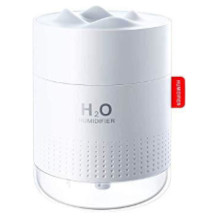
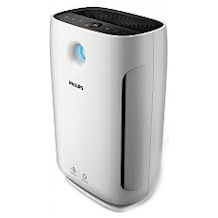
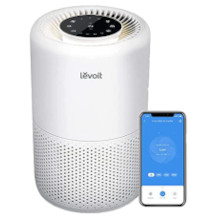
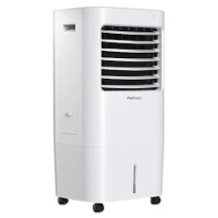
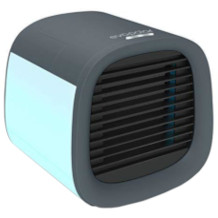
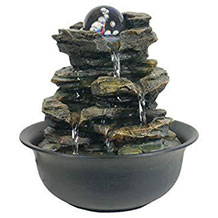
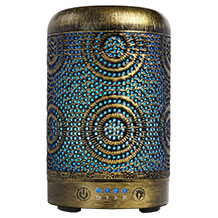
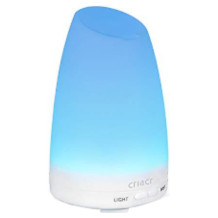
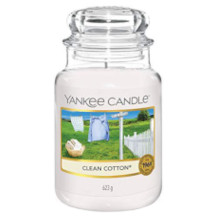
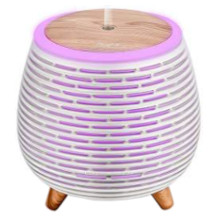
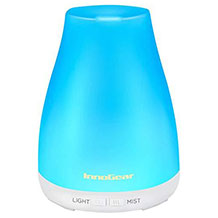
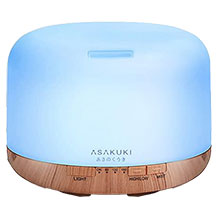
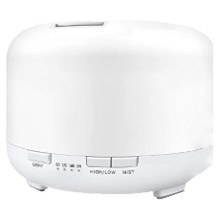
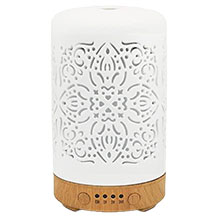

 2,336 reviews
2,336 reviews

